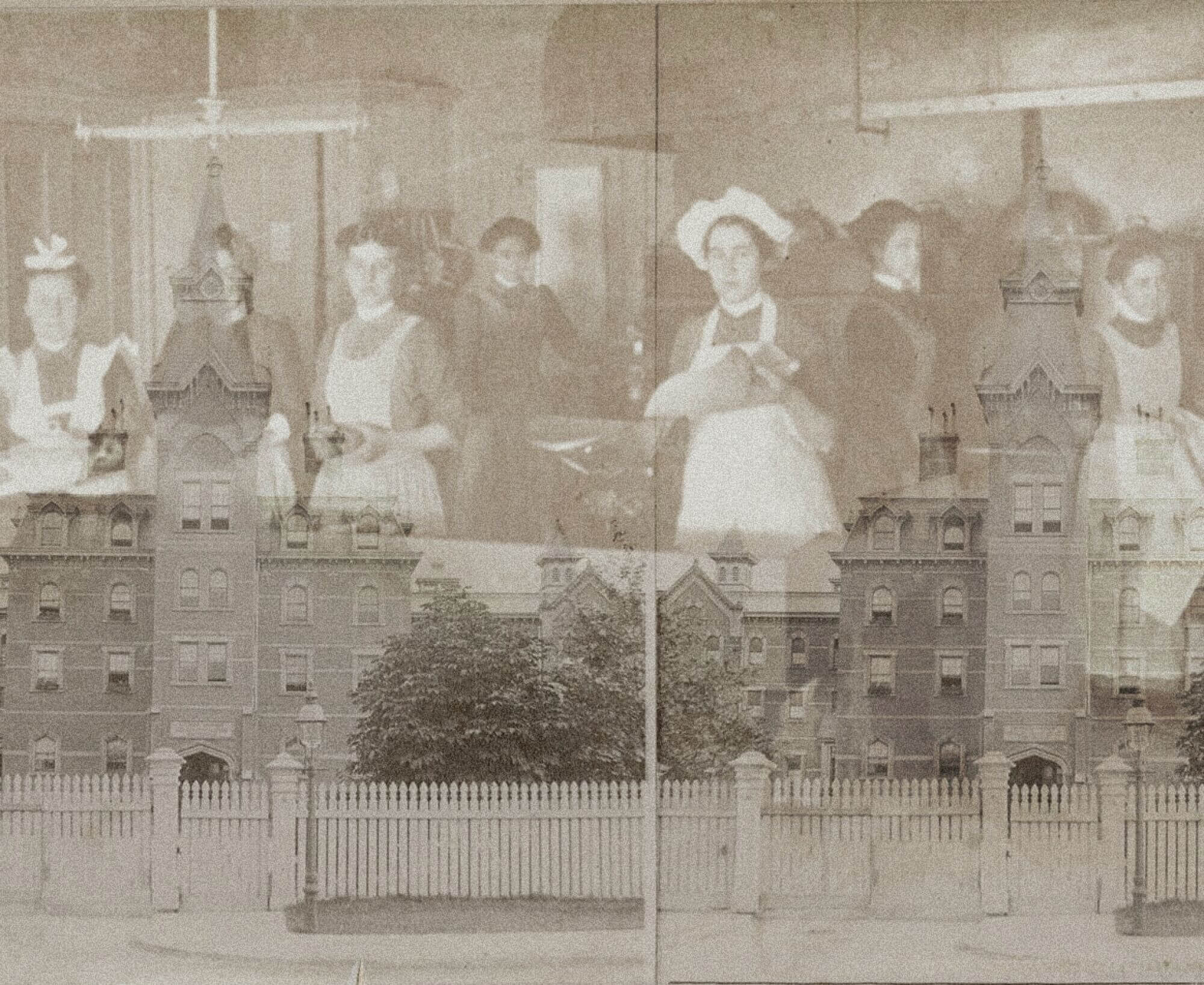
Bad Girls
In the late nineteenth and early twentieth centuries, women began to exercise increased agency and mobility in Toronto: seeking out independent, single lives and entering the city’s workforce. But public officials and provincial legislation often limited women’s social, sexual and economic agency.
As women sought to create lives for themselves in 19th and early 20th-century Toronto, they found opportunities, freedom, and sometimes adversity.
Explore today’s Liberty Village through the lens of women’s mobility in Toronto during the late 19th and early 20th centuries. As more women began working and living in the city during this time, public officials increasingly placed limitations on female agency, either through public opinion or provincial legislation. Many women faced accusations of criminality and deviancy, often leading to confinement at the Andrew Mercer Reformatory, the first all-women’s prison in Canada, which occupied much of what is today’s Liberty Village.
This tour was developed by emerging historian Autumn Beals (2022) as part of our Equity Heritage Initiative, and made possible by the support of TD Bank and The Ready Commitment, and a generous donation made by Alex Pike.
General Sources
Chilton, L. Receiving Canada’s immigrants: The work of the state before 1930. Immigration and ethnicity in Canada series. Canadian Historical Association, 2016.
Demerson, Velma, Incorrigible. 2004.
Glasbeek, Amanda Feminized Justice: The Toronto Women’s Court, 1913-1934, Vancouver: University of British Columbia Press, 2009.
Panneton, Daniel. Incorrigible Women. Maisonneuve, 2018.
Sangster, Joan. Criminalizing the Colonized: Ontario Native Women Confront the Criminal Justice System, 1920-60. Canadian Historical Review 80, 1 (1999): 32-60.
Sponsors

Support Our Program
Make an ongoing investment in Heritage Toronto’s mission and future: become a monthly donor today.
